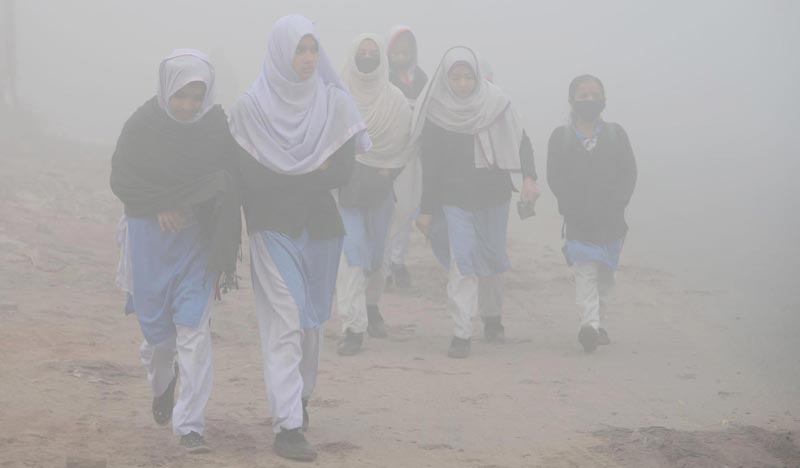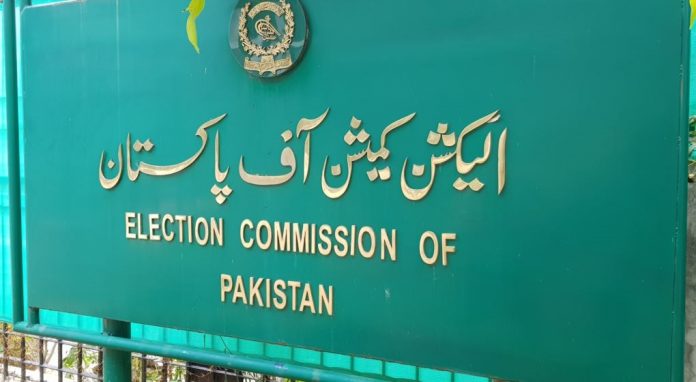
According to a notification issued by the provincial government, the schools will remain closed on Friday due to “dense smog” in the three districts.
Earlier this month, the Punjab education department had prohibited holding all outdoor activities in public and private schools across the province till December 20 for the same reason.
The government had directed all students to wear air filter masks during school hours. It had also decided to hold awareness sessions on environment in all schools. This is for the third time in a month that the government has decided to keep schools closed due to smog.
Lahore’s air quality remained ‘very unhealthy’ with an air quality ranking of 245 on Thursday evening, according to Air Visual’s Air Quality Index (AQI).
The Punjab capital was ranked the most polluted city in the world on Thursday, according to Air Visual, which records air pollution levels across the globe in real time.
For the last four years, smog, rightly being called the fifth season of Lahore, has deprived the people of sunshine and dusk-hour charm as layers of toxic smoke engulf the horizon from November to February. The situation has worsened this year.
Earlier this month, a group of students petitioned the Lahore High Court seeking a change in the AQI measurement system, and implementation of the Smog Policy.
Meanwhile, the Lahore High Court (LHC) on Thursday ordered the provincial government of Punjab to take concrete measures for eradication of environmental pollution.
Justice Jawad Hassan expressed strong displeasure over the increase in pollution, and directed the Punjab government to take stern action against the factories which have been polluting environment. “The rise in environmental pollution is alarming,” he remarked. Meanwhile, the Punjab government submitted its response that an action has been taken against 567 factories across the province, and effective measures are being implemented to curb the spread of pollution.
Earlier, the Environment Protection Department (EPD) of the province ordered closure of brick kilns which had been using “old technology” from Wednesday.
In a notification dated Nov. 19, the EPD said: “Consequent upon approval of the competent authority, no old technology brick kilns shall operate” in select cities from November 20 till December 20.
The cities in Punjab where kilns using old technology will not be allowed to operate for the next month are Lahore, Sheikhupura, Kasur, Faisalabad, Chiniot, Okara, Sahiwal, Khanewal, Multan, Nankana Sahib, Narowal, Sargodha, Jhang, Vehari, Hafizabad, Pakpattan, Gujranwala and Sialkot.
The notification, however, stated that brick kilns using “zig-zag technology”, a design change that makes more efficient use of fuel, would be allowed to operate. The decision was taken as a preventive measure to curb smog that had blanketed northeastern parts of the province since the start of November.
On Thursday, a thick blanket of hazardous smog engulfed Lahore, forcing citizens to take precautionary measures, of the lowering minimum temperature, humidity and calm wind at night that is allowing the contributing pollutants, being generated mostly by Indian Punjab farmers by burning massive crop residue, to penetrate the bordering areas.
The Air Quality Index (AQI) in Lahore reached 371 on average at 9am. Haziness, and nose and eye irritation was a clear indication of the beginning of the phenomenon which is pestering Lahore and other Punjab cities for the last four years, rightly being called the fifth season of smog.
It has deprived the people of sunshine and dusk-hour charm as layers of toxic smoke engulf horizon from November to February. Health experts have advised people, especially children and the elderly, to remain indoors and take more liquids.













